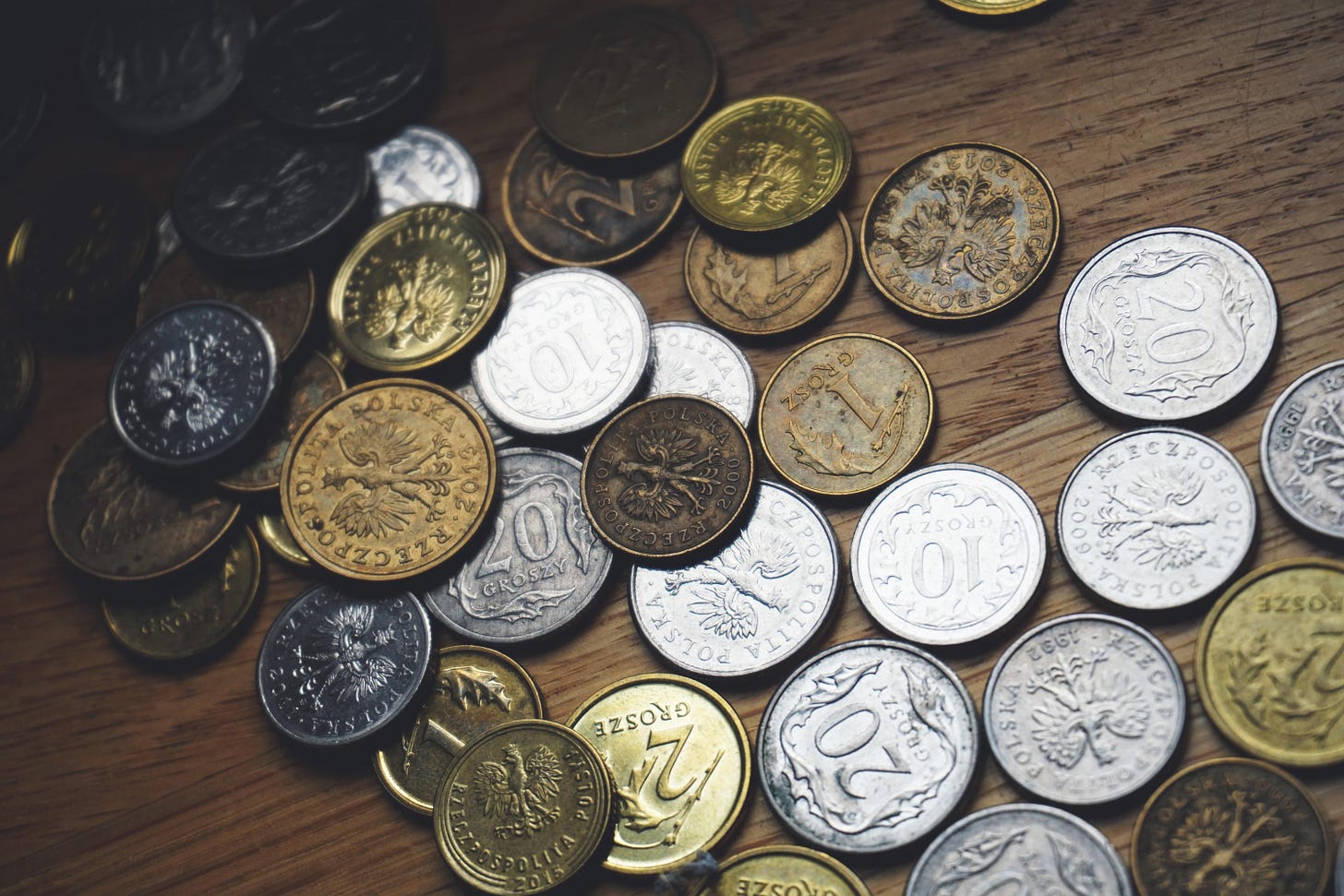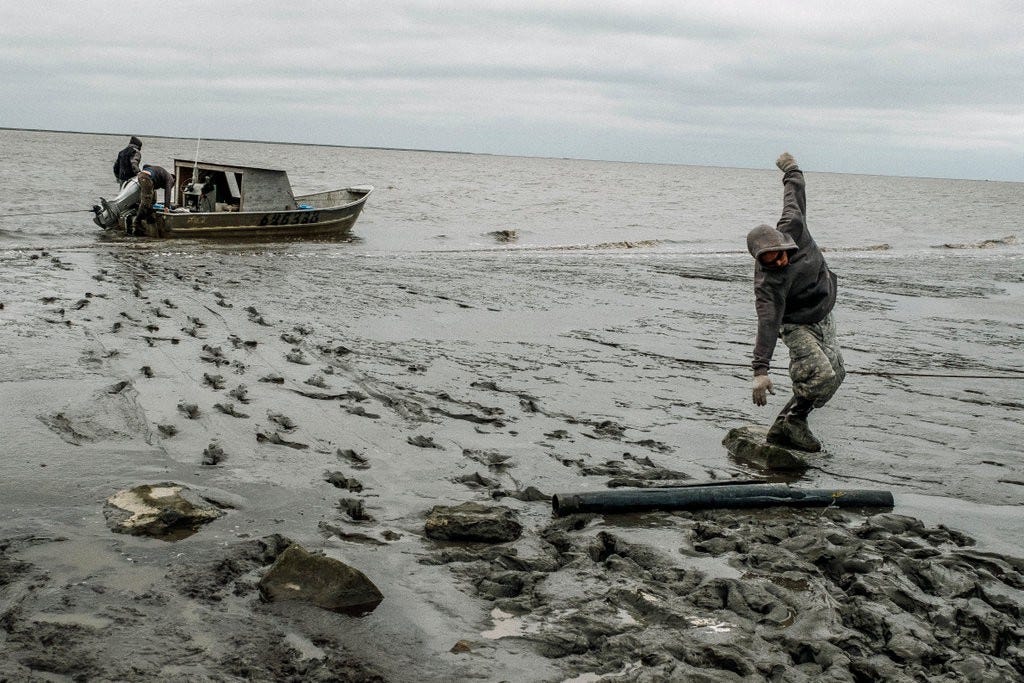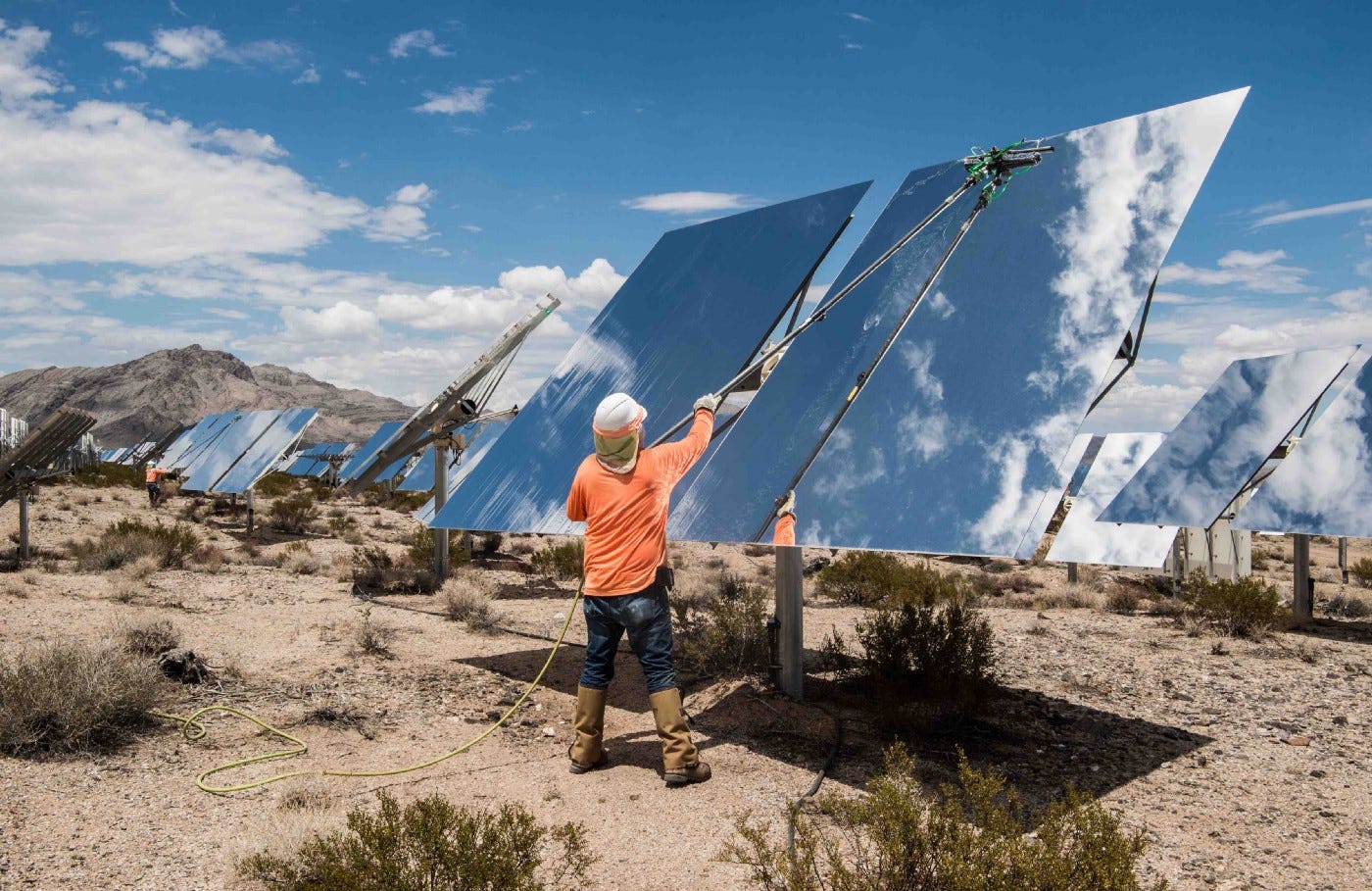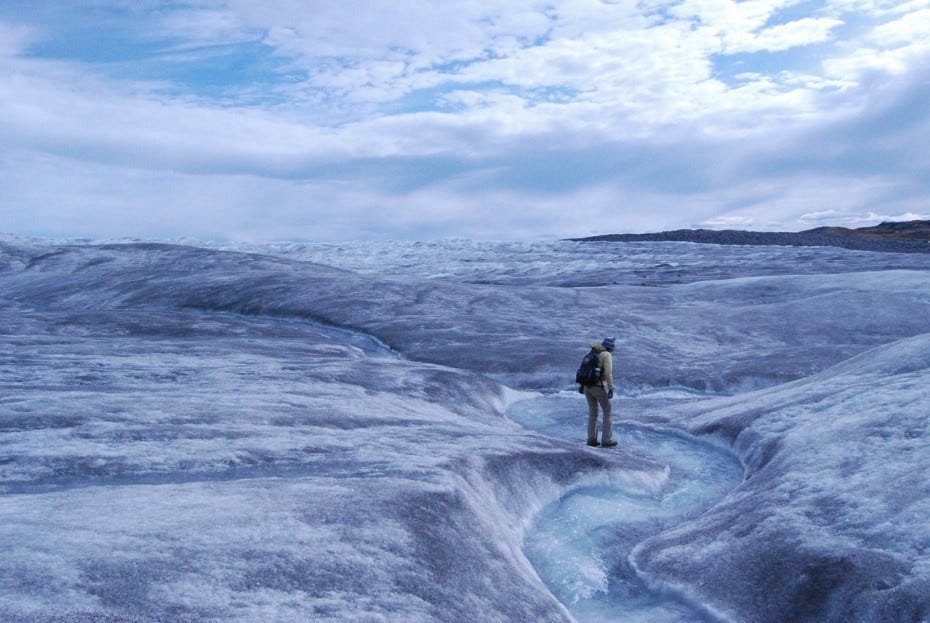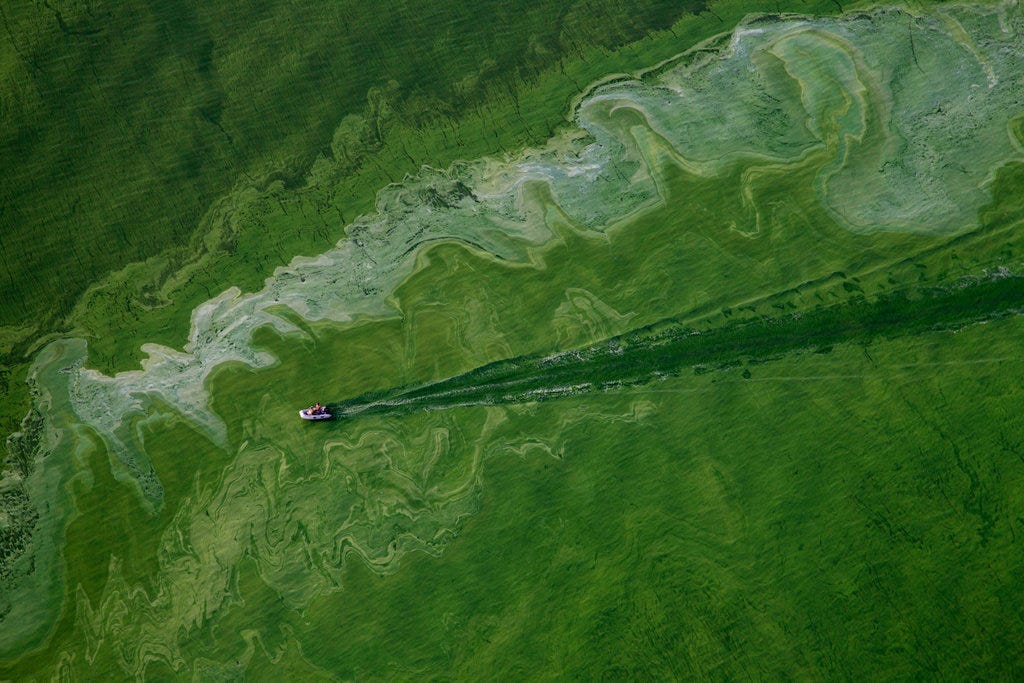Climate finance and gaming net zero
Creating games to model the transition to a low carbon economy
Hi all - just a note to say that I'll be sharing something slightly new here.
In 2020 I wrote a series of essays looking at different aspects of my practice. New Rules for Modelling stepped through some of the tools and techniques I use to create 'experiential models' of complex systems and future scenarios.
Over the next few weeks, I'll be releasing a new series of essays reflecting on some new projects from the last two years. This time, rather than focusing just on the tools and techniques themselves, I want to explore how this practice can be applied to a range of specific topics and challenges.
Under the heading New Rules for Game Design, this series look at how gaming can help us grapple with fields such as sustainable finance, disaster risk reduction, mega-events like the Olympics, community engagement and cross-cultural collaboration, land management, and emerging questions around geoengineering and the sustainable energy transition.
The series will be available on Medium, but I'll also be releasing each essay here through Substack.
I won't be releasing these as podcasts or videos (I don't think they'll quite work in that format) but once this series is complete, I'll be returning to my semi-regular monthly essay / podcast / video release.
If you have any questions or you'd like to chat about collaborating, please get in touch. And: peace!
Sustainable Finance
I want to begin with one of the most complex human systems imaginable: the global financial system.
The world’s economy is transforming. The slow, stumbling pivot to a low carbon world has begun. In the last few years, countless countries and businesses have committed to net zero emissions by 2050. Huge sums have been invested in net zero-compatible sectors.
At the same time, investment in fossil fuel infrastructure has remained steady. The pathway to net zero is unclear at best.
In 2021, I was commissioned by Climate Safe Lending to develop a game exploring the sustainable finance system.
The Climate Safe Lending Network is an international collaborative dedicated to accelerating the decarbonization of the banking sector. The network brings together senior leaders and changemakers within banks, NGOs, academics, investors, businesses, and policy experts.
Working with game designer Shang Lun Lee, I devised The Pledge, a 60 minute game played remotely over video chat. We launched the game at CSL’s Is Net Zero Enough For Banks workshop in May 2021, for 50 representatives from US and European banks, NGOs and financial regulators.
No game or model can capture the complexity of the global financial system. Instead we set out to illustrate several key dynamics of the sustainable finance transition, and to provoke discussion around those issues.
So our first task, with our Climate Safe Lending collaborators, was to decide which aspects of the system we should focus on. Which systems dynamics should we highlight and which should we set to one side?
Stakeholders within the system
In some ways, every one of us is a part of the financial system. But what are the key user groups? If our focus is climate finance, a starting list might include:
Banks (investment banks, retail banks, cooperative)
Central banks and financial regulators
Pension funds, hedge funds
Citizens, taxpayers, consumers
NGOs
Pressure groups (like Go Fossil Free or Reclaim Finance)
Corporate initiatives (B Team, Ceres)
Sustainable exchange-traded funds (Principles for Responsible Investment)
Businesses
A game could focus on any and all of these groups, and the interactions between them. In our early conversations, we discussed different possible models for the game.
One version had different players take on different roles within the system — some as regulators, others as activist NGOs or pressure groups, still others as corporations in different sectors.
In another version, players would shift roles within the system over the course of the game — perhaos beginning as investors, then shifting to become activists, then central bankers, and so on.
In the end, we made the decision to focus on banks. In The Pledge, players took part in teams, each team representing a different bank.
Players negotiated within their teams to determine their bank’s strategy in transitioning to net zero.
Players were given the twin goals of protecting their own bank’s profitability and supporting the global transition to net zero. The question of whether to cooperate or compete with other banks was up to them, and different teams took different approaches.
As with any format, this approach opened up certain conversations, but closed down others. In our model of the finance system, banks became the key agents, with regulators, NGOs and ausinesses becoming external forces rather than active agents.
In future iterations of this project, we would experiment with different models for who the players represent.
Internal bank dynamics
Of course all of these stakeholder groups are complex systems in their own right. An NGO, a financial regulator, a corporation, all of them have complex internal dynamics that are critical to understanding their behaviour.
The Finance Innovation Lab have done fascinating work delving into the complex interactions between groups and the forces within banks.
There are three forms of power within banks:
· Formal authority — held by senior managers across functional areas like risk, finance, strategy, HR, legal, marketing and communications.
· Informal authority — held by individuals within the bank with strong networks and personal relationships.
· Expert power — belonging to those with technical expertise required by other parts of the bank, eg sustainability teams.
Finance Innovation Lab maps relationships of power and influence within banks according to individuals’ levels of formal authority and their commitment to climate goals.
Those individuals that feel that their bank needs to finance a just transition are ‘climate intrapreneurs’ — pursuing top down or bottom up change within their bank.
Although The Pledge didn’t dive deeply into the internal ecology of banks, we gestured to these dynamics through our ‘External Allies’ sub-game.
In this sequence, if a player felt that their bank was behaving in a selfish or unsustainable way, they could choose to reach out to an activist organisation like Greenpeace or Extinction Rebellion. They would inform that group as to the best moment to apply external pressure to the bank, when it would be most effective.
This contentious strategy (some called it leaking) is a real-life tactic that people within banks have employed. In The Pledge, it was an effective way to helping your bank commit to its net zero goals — though it sometimes came at a cost to your career prospects if you were exposed.
But this single sub-game doesn’t do justice to the complex system of power dynamics and negotiations taking place within banks, which deserves to be the subject of a whole game in itself.
Types of risk
The climate finance world has developed its own taxonomy of risk, to articulate the many different categories of danger that organisations and investors face. This was the focus of an exercise I developed with Russell Cook from Edge Effects, as part of his Environmental & Social Risk Management Training training for banks in Uganda.
There are many different ways to categorise risk. An incomplete list:
Physical / operational risk
This relates to the danger of physical infrastructure being damaged by extreme weather events. For example, a hotel owner might face increased operational risk to their properties from more extreme flooding. A pine plantation or a grain farm might face physical risk from more frequent droughts. Banks and financial institutions that invest in these businesses are also exposed to these risks.
Resource scarcity / supply chain risk
Businesses that are dependant on certain products are at risk of those products becoming scarce. If drought impacts a pine forest or a grain farm, there’s a downstream effect on furniture manufacturers that rely on wood, or beer breweries that need grain.
Transition / regulatory risk
This is the risk that new technologies might disrupt your business and make it no longer profitable, or that new laws and regulations might make it harder — or impossible — to do business.
This is a particularly resonant risk for the fossil fuel sector, which is facing the twin disruptions of cheaper renewable technology and the prospect of new legislation affecting their ability to extract and sell their product.
The danger with transition risk is waiting too long to shift out of your old way or doing things. Or, if you’re a financial institution, waiting too long to adjust your investment portfolio. When the transition hits, you could be caught off guard.
In The Pledge, there was a transition cost for banks to switch their investments to a net zero compliant path. If you’ve been doing business one way for decades, it’s not easy to change course — it requires R&D, experimentation and it’s not cheap.
Over the course of the game, that transition cost increased. The banks that waited longer to switch to a low carbon investment portfolio had increased momentum behind their current trajectories, and had missed out on the low hanging fruit in the green markets which other banks had invested in first.
The risk for those banks that maintained a high carbon course was that new regulation would suddenly arrive and drastically impact their investments before they’d had a chance to prepare.
This element was an interesting source of debate among the economists who advised us on this game. Some argued that transition costs increase over time. Others said that they go down over time, as the pathway to switch to net zero is cleared by early adopters.
This is an example of the complexity of creating an interactive model in a space where no two experts agree on how the system functions.
Reputational risk
As times go by, public attitudes and opinions shift. Once-prestigious tobacco gradually lost their ‘social license to operate’ as they became associated with sickness and death.
Fossil fuel companies are currently undergoing a massive change in how they are viewed, particularly in the developed world. There is always blowback against companies that are seen to be unethical or unsustainable.
It’s debatable what this blowback means concretely in terms of sales in a global market (worldwide cigarette sales didn’t peak until 2014, long after tobacco lost its allure in the US and Europe), but no company or investor wants to be associated with oil spills, sweatshops or class action lawsuits.
In the exercise I developed with Russell Cook to explore risk, players could choose to invest in a range of different companies, such as sea ports, water treatment facilities, advertising agencies, data farms. Each company was exposed to different types of risk.
Players then followed a hypothetical climate shock through the system, seeing how it impacted on different categories of risk, and which investments remained profitable over the long term.
The game illustrated the challenges of managing a portfolio in the context of a multi-dimensional crisis such as climate change.
The Halo Effect
It’s sometimes said that the opposite of risk is opportunity. In The Pledge, we looked at the opposite of reputation risk — the opportunity to become a ‘green leader’.
As James Vaccaro has pointed out, there’s an opportunity for banks to become leaders in the emerging sustainable finance space.
Banks that develop an early reputation for supporting and enabling sustainable projects and businesses will attract smart, ethical customers, bright and passionate employees, and access interesting new investment opportunities.
In a positive feedback loop, a slight advantage in this space is magnified over time. If a bank gets early positive press for its sustainability efforts, people will perceive it to be a leader, and so the bank attracts more green customers, clients and projects. As the old adage puts it, ‘them that has, gets.’
This is the ‘halo effect’, and it was represented in The Pledge by a bonus that accrued to the first bank to significantly commit to net zero investments.
Whether the ‘green leader’ advantage outweighs the short-term costs of being the first to forego fossil fuel investments is an open question.
Regulation
Perhaps the biggest single factor in shaping sustainable investments is financial regulation from governments and central banks.
In The Pledge, the regulators operated as an external force, placing two potential forms of financial regulation on the table.
One was ‘Green Subsidies’, a package of financial incentives for green investments. This was a carrot-instead-of-stick policy not dissimilar to the recent US Inflation Reduction Act.
The other was ‘Enhanced Credit Guidance’, which drew on existing anti-terrorism finance laws to actively direct bank investment away from unsustainable projects.
Of course, these two options drastically simplify the vast range of possible regulation on the table. Not just that, but regulation differs country to country, and financial institutions operate globally.
There is room for a different game (or games) that dives more deeply into the system of policy-makers, lobbyists, activists, negotiations and debates that go into financial policy.
Who are these games for?
What The Pledge captures is a very limited slice of a huge system. My feeling is that the financial system has been under-served by game designers and simulation designers.
There are many people making detailed economic models — but not enough of them are designed to be played with, to be used as prompts for discussion and reflection.
Who should be playing these games?
Fund managers — for example, pension fund trustees.
Consumers — to help them understand where their money is going and to support them becoming more active in guiding their investments.
Activists and NGOs — to help them strategise and more effectively push for change.
Regulators and policy-makers — to help them understand the pressures and trade-offs that other stakeholders in the system are facing.
Bank employees — to help them advocate effectively for change within their organisations.
There are numerous interconnected sub-systems within the larger finance system. I’ve mentioned a few, but here’s a non-exhaustive list of things that a future game could look at in detail:
Internal bank dynamics
Managing the impact of a single extreme weather event on a portfolio
Negotiations between regulators and financial institutions
More speculatively, a larger game could use all these as sub-games within a bigger model. A larger, looser game that captures some of the complex scope at play within this emergent system.
By helping us think through the complex challenges of the financial system’s net zero transition, games and interactive models can help us navigate a journey through the choppy waters of the coming decades.
----------
NEWS AND PROJECTS
Last month I presented You’re Safe Til 2024: Deep History at the Pleasance as part of the Edinburgh Fringe. I was stoked to receive a Scotsman Fringe First award and had some lovely responses from audiences and critics:
'A personal drama driven both by passion and a low-key but effective theatrical verve.'
★★★★ Lyn Gardner, The Stage
'It’s hard to imagine a fresh perspective on climate change, but Finnigan finds one.'
★★★★ The Scotsman
‘There’s a grim sort of optimism to the stories of survival that Finnigan unearths from humanity’s past, tempered with an acute awareness of all that still stands to be lost.'
★★★★ The Guardian
'Come for the earnest reflection on our limitless potential for creativity, kindness and destruction; stay for the most unsettling mashup of Steal My Sunshine by Len and Justin Bieber’s Sorry you’ll ever hear.'
★★★★ The Observer
If you’re in London, I’ll be presenting the show at the Barbican London from Tues 27 Sep - Sat 1 Oct. Please come along!
-----
While I was in Edinburgh, New Scientist invited me for a chat as part of their weekly podcast. I had a lovely chat with Abby Beall about the art and craft of making work about the climate. A really lovely conversation - dig.
-----
On Tuesday 11 October I'll be presenting the first public sharing of the new episode of You're Safe Til 2024 at Shoreditch Town Hall in London.
Entitled The Birthday of the World, this episode is a dance party held to celebrate the new world we're building in the ruins of the old.
----
In Adelaide, the Kinetik Collective have just launched their production of Kill Climate Deniers at the State Theatre of South Australia - read the InDaily review here.
----
As ever, you can get more background on my practice in my New Rules for Modelling series, or you can check out my website. And if you have any questions or offers that might make my life more interesting, feel free to get in touch.
Peace!


